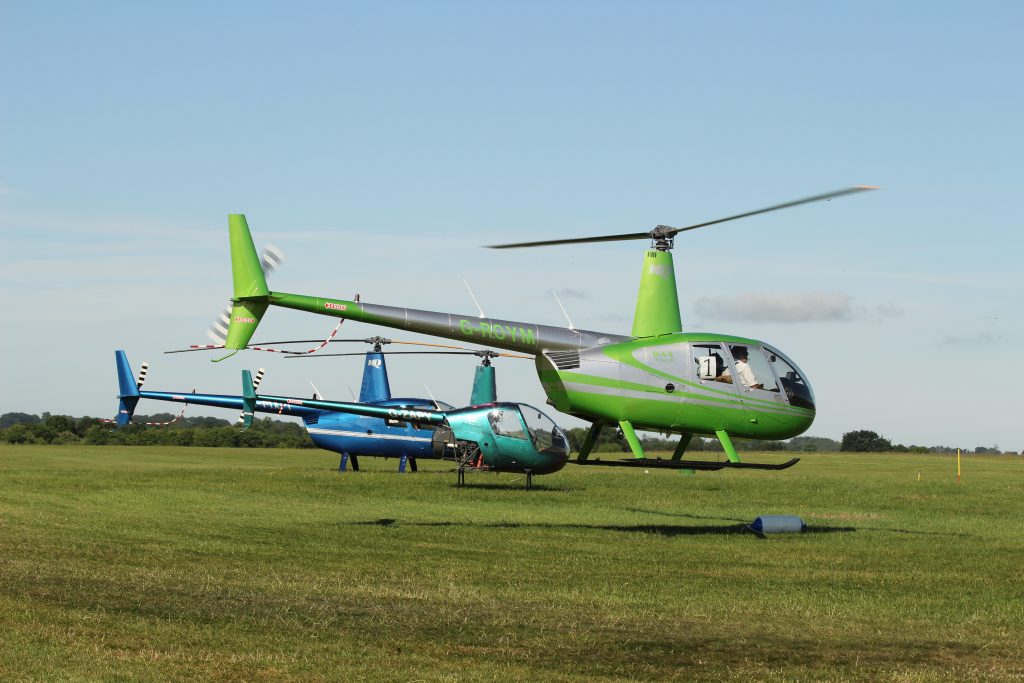Despite how it often looks at the time, few helicopter accidents are the result of only one factor. Many are said afterwards to have happened due to human error, pilot error, or whatever term you prefer, but they actually tend to occur because a number of things go awry at the same time. Poor weather, navigation problems, fatigue, stress, distraction – all of these are contributory factors in many rotary accidents. Yet most helicopter pilots, if they are honest, will admit to having flown when tired or stressed, and have been distracted by something or had the weather start to close in on them. It’s normal, almost. Generally it’s not a major problem, and indeed such things can often be converted into learning experiences.
However, it is different when more than one problem occurs at the same time. For example, perhaps the weather worsens, you decide to divert, and then you realise the GPS is playing up. Maybe a long flight has tired you; then you suddenly have to cope with complicated ATC instructions in crowded airspace. It is the odds stacking up like this which can lead to disaster. Some years ago I wrote about a flight in which, as a low hours helicopter pilot, I attempted a long trip over unfamiliar territory, through the airspace of a major airport. On the flight home, with a low sun in my eyes and complicated departure instructions to follow, I missed an instrument warning light and was lucky to avoid an accident. I called my article ‘The Holes in the Cheese’, a reference to the well-known analogy of flying disasters being like gruyere cheese in which each hole represents a possible problem; and it is when the holes line up that an accident occurs.

Another way of putting this is to say that disasters happen when you become mentally overloaded. Overload when flying is difficult to deal with since, by definition, there is no part of your brain available to sit back and realise that you simply can’t take in any more. If you can manage to see it coming it is sometimes possible to take off the pressure – perhaps by diverting, or giving control to a co-pilot, or even landing… it depends on the circumstances. But if you don’t or can’t do any of those things, your mind can simply cease to take anything additional on board – perhaps an obstacle, or a radio call, or a warning light as in the example above. Indeed, something as simple as someone speaking to you in such a situation can simply be enough to push you over the edge – and this is when accidents take place.
Of course, all these points apply to any pilot of any flying machine. So why mention helicopters in particular? Well, I believe that this kind of accident is more likely to affect helicopter pilots, simply because of the nature of the aircraft we fly and the prevailing rotary aviation culture. Let me explain…
Firstly, let’s look at where accidents happen. A large proportion are caused when flying low – by Controlled Flight Into Terrain (CFIT), wire strikes, or colliding with obstacles. Indeed, short of losing control of the aircraft or having some mechanical failure, there’s not really much which can go catastrophically wrong at altitude – and if it does, you have far more time to sort it out. So low flying might well be seen as a contributory factor, and, as a general rule, helicopters fly lower than fixed-wing aircraft. This is often simply because they can! Helicopters are easier to manoeuvre at low level than their fixed-wing counterparts, so we tend to use that capability frequently – we avoid bad weather by flying round or underneath it rather than ‘on top’. Perhaps we do this to the extent that pilots even think it’s a necessary part of helicopter flying. In an article I once read concerning a group flight, the author recounted how: “with a cloud base of only 1,300ft and rising ground ahead, the helicopters were soon struggling to find a clear route, while the fixed-wings were able to climb.” What…the helicopters couldn’t climb? Since when are rotary machines limited to staying below 3,000 feet? Yet it must be admitted that is often an assumption, or a habit, in rotary flying circles, and many helicopter pilots will stay low in difficult circumstances. And at low level you have obstacles, wires, less time to take action…in fact you could be unwittingly setting yourself up for an overload situation.
Secondly, the legal weather minima for helicopters is less than that for fixed-wing aeroplanes at low levels. Now I think this is reasonable, and I certainly wouldn’t want to change the rules! Yet…does it maybe cause some helicopter pilots to think they can fly in exceedingly poor weather? When working as an instructor, I recall a low hours helicopter owner setting off in his own aircraft in very limited visibility, when three instructors told him it would be a good idea to stay on the ground. He flew, and he reached his destination safely. But he easily might not have done, particularly if something else had gone wrong. Again, it’s almost setting up an overload situation, and I think we’d all have liked to be able to point to a rule which said he couldn’t fly.
Next, most helicopters require more ‘hands-on’ flying than fixed-wing aircraft. This isn’t true of the more sophisticated ones, but many rotary aircraft need to be constantly flown; they cannot be trimmed and left to themselves as aeroplanes can. Indeed, this is part of their attraction, and it is those who like hands-on flying who are often attracted to helicopters. But it means that helicopter pilots cannot reduce their workload by trimming the aircraft and leaving it alone. In effect, we have a larger workload from the start, and while that doesn’t matter in normal circumstances, if there is any other problem it could make a difference.
Finally, helicopters can land almost anywhere. This fact is a massive advantage. But maybe it can also be a cause of accidents, if it tempts a pilot to just push on a bit further, to leave things a little too late. After all, unless you are in the middle of the countryside with no obstacles and flying into wind, you can’t just plonk your helicopter down anywhere. Usually a little preparation is needed, a bit of a ‘recce’ if not a proper circuit. It is easy to leave everything a little too long, and that sensible precautionary landing becomes an accident site.
So what can be done about all of the above? Well, after an accident, those sitting safely on the ground frequently conclude that the flight should never have been attempted in the first place. Certainly that was the case with my ’Holes in the Cheese’ incident – too many challenges at the same time for someone with limited flying experience. So perhaps it comes down primarily to the quality of our ‘go/no-go’ decisions. Maybe we all, as helicopter pilots, need to look more closely at what every flight involves. For example…perhaps the weather is marginal, but you know you have the experience to cope with that. But…are you also flying an unfamiliar aircraft? How well do you know the route? Do you have passengers who aren’t used to flying? Have you programmed the GPS correctly? Are you planning to use your mobile phone or to text? Are you likely to get distracted in any other way? None of these alone may matter, but together, are the odds stacking up……?
Perhaps it would help if all these factors were rated on some kind of points system, in the same way that stressful life events sometimes are. Then we could add up the points, and know instantly if a particular flight would be over the limit. But somehow I don’t really think that this issue is that simple. It is very much an individual thing, for we all have different capabilities and limitations. But perhaps we do need to be much more aware of what we can safely do rather than what we’d like to be capable of when it comes to our flying ‘go/no-go’ decisions. We need to look at the whole picture, and be honest with ourselves.
And…maybe we all need to be a whole lot braver when it comes to making a decision NOT to fly!







